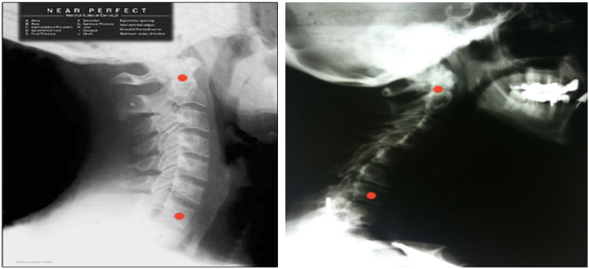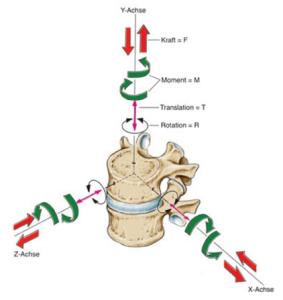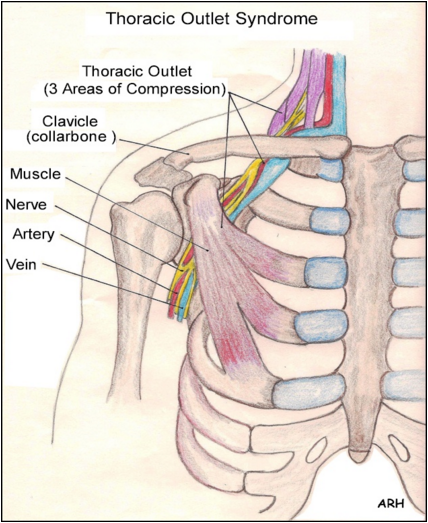Why Stretching Won’t Fix Your Stiff Neck
One complaint I hear and overhear all the time is neck stiffness that won’t go away no matter how much you stretch. I’m convinced ⅔ of Portland has a stiff neck. Not so much pain (unless you turn it a little too far) but just an annoying stiffness that feels like your neck needs some oil or something.
A LOT of things can cause a stiff neck. Immediate events like a minor strain/sprain from something you did yesterday or the funny way you slept last night can cause it. Serious conditions like a herniated cervical disc, damaged ligaments/tendons (whiplash), and nerve entrapments can cause it too. This blog isn’t for the neck stiffness that comes from an event. This blog is to answer the question, “why is my neck always stiff? I didn’t do anything and even though stretching and massage feels good at the time, nothing seems to help long term?”
If you’ve been following my blogs, you’ll recognize my approach to the human body in this explanation. The body is reactionary – it is the way it is for a reason. If your neck is always stiff and the cause was from tight muscles, then massage and stretches would fix it. They would be a long term solution. But if addressing those tissues isn’t fixing the problem, then perhaps the tight muscles are just a symptom of another cause that you’re not addressing. Why would neck muscles always be tight? Here are three reasons that – when addressed – free up a stiff neck more times than not for a lot longer than a typical steam and cream treatment.
1 – Your Upper Back is too Stiff
Think of your body like a series of cogs, pulleys, and levers. Your elbow doesn’t work alone, it works with the wrist and shoulder. The knee takes direction from the ankle and orders from the hip. What’s the point? It’s all interrelated and if one section isn’t working right, the other neighboring sections need to change how they behave to keep the system functioning.
To boil it down, some joints are made for mobility and others for stability – this is what allows people to move and run and jump. Your shoulder joint is made for mobility. If it becomes stiff, its neighboring joints, the elbow and scapulothoracic joint (made for stability) have to move a little more than they should. This altered motor control can lead to pain and injury.
So – back to your neck. Your upper back is made for mobility and your mid to low neck is made for stability. If your upper back isn’t mobile, your neck needs to move more than it should during everyday life. But there’s a lot of important stuff around your neck and your body is very good at protecting important structures so as a result to this increased biomechanical demand for mobility, your brain tightens up the neck musculature to prevent any possible damage. I see this scenario a lot in people that sit for most of their day (looking at you, Portland coffee shop “writer”) and in swimmers, pitchers, and golfers.
2 – Your Head is Too Heavy
 Not really. Your head is just the weight is needs to be but the distribution of that weight may be a little off. Have someone take a picture of your from the side, is your ear in line with your shoulder? In other words, is your posture good? In a lot of people – mostly students and people that sit over a screen all day – the head can creep forward. Slouching over books or a computer all day causes the shoulders to roll forward putting a little bend in your upper back at the base of your neck. If your neck followed with the back, you’d be looking at your keyboard or lap – not your monitor, so your upper neck extends back a little to keep you looking forward.
Not really. Your head is just the weight is needs to be but the distribution of that weight may be a little off. Have someone take a picture of your from the side, is your ear in line with your shoulder? In other words, is your posture good? In a lot of people – mostly students and people that sit over a screen all day – the head can creep forward. Slouching over books or a computer all day causes the shoulders to roll forward putting a little bend in your upper back at the base of your neck. If your neck followed with the back, you’d be looking at your keyboard or lap – not your monitor, so your upper neck extends back a little to keep you looking forward.
What does this end up doing? The average head weighs about 11 pounds. The body is made to carry that 11 pounds on top of our shoulders through a normal cervical curve. Putting the weight of your head forward increases the demand on the support system. Essentially, it’s as if your head now weighs 42 pounds! Think about holding a bowling ball. With your elbow bent and the ball close to your body, it doesn’t really feel heavy. Now straighten your arm and hold the ball away from your body – it will feel heavier, won’t it? -Same principle. To make up for the “increased weight”, your joints lock and your muscles stiffen up. In the long term, this can cause some pretty noticeable changes on x-ray and can really speed up the rate of spinal degeneration / joint disease.

3 – A Joint Isn’t Moving Right
 Sometimes if the feeling of stiffness is local to one particular spot, it may be that a particular cervical joint has decreased its segmental range of motion and is just blocked or feeling like it is getting caught or stuck. Often the quickest and best fix is an adjustment to restore that joint’s segmental motion.
Sometimes if the feeling of stiffness is local to one particular spot, it may be that a particular cervical joint has decreased its segmental range of motion and is just blocked or feeling like it is getting caught or stuck. Often the quickest and best fix is an adjustment to restore that joint’s segmental motion.
Obviously, these are just a few examples of the many, many things that can cause a stiff neck. Most of the time, the cause is self limiting and not serious but given that it is the neck, it’s worth having checked out and assessed by a professional. If you’ve been dealing with a stiff neck for a while and would like to get it better, consider making an appointment.
I hope you’ve found this blog useful. As always, feel free to write in with questions and comments or drop me a line on Facebook.
Until next time, eat well and move often!
Questions about this post?
Dr. Lell would be happy to answer questions or provide more information discussed in this blog post. Contact him through our Contact Page.
Photocredits:
jpilatesblog.wordpress.com
drtanase.com
harms-spinesurgery.com
Spinal Fusion Surgery may lead to PTSD
Post Traumatic Stress Disorder, PTSD, is a common condition that millions of people a year will encounter. Symptoms include mood, behavioral, and physiological changes along with disturbances to your sleep cycles and cognitive functions. Though there is no “cure” for PTSD, treatment is found to be very beneficial. Treatment options vary greatly because the condition varies greatly.. We used to usually just associated PTSD with soldiers returning from war but it can experienced following any traumatic event such as assault, bad relationships, or automobile accidents just to name a few. There is some evidence suggesting that certain spine surgeries could also lead to PTSD.
What is spinal fusion surgery?
Spinal fusion surgery is the mechanical linking of two or more bones to completely immobilize the joints between them. Most commonly performed in the lumbar spine, this controversial surgery is performed for conditions such as scoliosis, degenerative joint disease, disc herniations, and spinal tumors. It accounted for 3% of operating room procedures in 2011 – a 70% growth since 2001.
Making the connection between spinal fusion surgery and PTSD
In 2012, the Oregon Health and Sciences University conducted a study to investigate a link between PTSD and elective spinal fusion surgery. Elective meaning that the surgery wasn’t absolutely necessary but that the patient chose that treatment option over other treatment options. The researchers did find a link and calculated the odds of developing PTSD after spinal fusion surgery to be 20% (1 in 5).
They looked at 73 consecutive surgeries and checked in with the patients regularly for months after the operation to see how they were doing. The researchers ran an objective civilian PTSD questionnaire across the patients to see where they fell on the scale. At each point, some portion of those having undergone the surgery were suffering from PTSD. The highest occurrences were at 3 and 9 months.
Now obviously there are a lot of variables here. So the researchers went on to see what mattered the most. They found that people with prior psychological conditions had the greatest chance of developing PTSD. They also found the occurrence of a complication, being younger than 50, losing more than a liter of blood, and staying in the hospital for more than 10 days also had significant predictive values.
To see more, check out the news post from OHSU here
All surgeries have risks. Some more than others and often times, the benefits will outweigh those risks. But it’s important to be made aware of all the potential risks when electing to have any procedure. The development of Post Traumatic Stress Disorder following spinal fusion surgery is not often talked about but with odds of 20%, it’s worth knowing and making sure you and your surgeon have a plan for follow up care and post surgical support.
Questions about this post?
Dr. Lell would be happy to answer questions or provide more information discussed in this blog post. Contact him through our Contact Page.
Some Truths About Bone Broth
I don’t know about what’s going on in your part of the country, but here from Portland to Oregon City, there is a new health craze catching on. The LuLuLemon clad gods and goddesses of fashionable health trends have spoken! And bone broth shall be the next panacea for conditions ranging from acne to leaky gut. We’ve got bone broth food carts, companies that will ship organic free-range broth cubes, and butchers selling “special” broth bones. Move over, Doterra Essential Oils, the Paleo Diet is saving a seat for you at the singles’ table.
Is it worth the hype? Bone broth certainly isn’t new but like many old world remedies, its benefits may be over promised. A patient asked me to do some digging around on the topic and instead of just sharing what I learned with one person, I thought I’d let everyone in on it. It’s important to keep in mind that no large clinical lab is running randomized controlled trials on bone broth. So I’ll reference the evidence when I can like I always do but this will largely be discussion on the feasibility of claims.
So here was have it – some truths about bone broth
Claim No. 1 – Bone Broth Strengthens your Bones
People say that it contains the bone enriching mineral calcium. The idea here is that the vinegar used in its preparation leaches out these this and other minerals (remember the calcium and egg experiment in middle school?). A 1934 study by McCance found that bone broth contained less calcium than a glass of milk. They also found that broth made from vegetables contained more calcium than bone broth which isn’t surprising when you consider how awesome broccoli is. If you’re drinking bone broth for bone health and trace minerals, I’d recommend you consider a supplement.
Claim No. 2 – It’s is good for your Joints
Absolutely. What happens if you chill the broth? It turns into jello. That’s because the broth is a rich, rich source of collagen, one of our body’s main building blocks. Unlike joint health micronutrients found in a bottle, this is a pre-packaged whole-food preparation that your body can easily break down and put to use.
Claim No. 3 – It’s is good for your Skin
Yes. For the same reasons mentioned above. Your expensive anti-aging skin creams say that they have a collagen boosting formula eliminating fine lines and wrinkles. Bone broth works like this from the inside out.
Claim No. 4 – It Heals Leaky Gut
No one knows, with any certainty, what Leaky Gut Syndrome is. Most of us can agree that it is a multi-factorial functional issue. Many different things can lead to leaky gut, so many different things can improve it in some small way depending on which of the root causes is being addressed.
Claim No. 5 – It Boosts Your Immune System and Energy
True. All of the whole-food nutrients from the marrow, vegetables, and herbs can definitely offer a boost to those who drink it, especially if they are living a nutrient-deficient lifestyle like most Americans (whether you know it or not, you could be living one too. Read this blog post to learn more).
I’ve always been a fan of bone-broth, if anything just for the taste and how well it can warm me up on a cold winter day. And there are, without doubt, many benefits of this food.
Like any responsible clinician, my opinions are based on the best evidence available to me at the time. If there’s something you feel I’ve overlooked – I’d welcome your input on my Facebook page.
Until next time, eat well and move often!
Questions about this post?
Dr. Lell would be happy to answer questions or provide more information discussed in this blog post. Contact him through our Contact Page.
Understanding Thoracic Outlet Sydrome
Hey guys, Dr. Lell here explaining another common condition with common language. Today we’re talking about Thoracic Outlet Syndrome or T.O.S. An insidious condition involving many structures that results in numbness, burning, “tiredness”, “fullness”, tingling, or weakness in the arms or hands, especially when they’re above your head.
As always, let’s cover the relevant anatomy and identify the players in this story.
 Take a look at the picture to the right. The blue, red, and yellow structures are the neurological and vascular components that supply your arm from the shoulder to the finger and a little bit of your trunk. The pink colored structures are your scalene and pec minor muscles. Also pictured is the clavicle and underneath it, not labeled, is the first rib through which you can see the neurovascular structures slip between.
Take a look at the picture to the right. The blue, red, and yellow structures are the neurological and vascular components that supply your arm from the shoulder to the finger and a little bit of your trunk. The pink colored structures are your scalene and pec minor muscles. Also pictured is the clavicle and underneath it, not labeled, is the first rib through which you can see the neurovascular structures slip between.
So there you have it, some nerves, some vasculature, the pec, the scalene, and the clavicle with first rib. Easy right?
What is thoracic outlet syndrome?
It’s a compression of the nerves and/or artery and vein at the scalene muscle, the first rib/clavicle, or pec. It can be a compression at one sight or all of them. Other things can cause the compression too like a cervical rib or lung tumor – but that’s less common. The nerves and/or artery gets pinched cutting off the supply to the stuff down-stream. Chances are, the off-branches of these nerves also gets pinched a little somewhere down the line and this can multiply the effect (check out my blog on carpal tunnel for more explanation).
What are the symptoms?
- pain, ache, tingling, numbness, or a just a weird feeling in one (or both) arms, usually the upper arm, shoulder, and/or inside of the forearm and ring/pinky finger
- Cold intolerance in the hands
- Headaches
- Night pain
- Loss of fine motor control/dexterity
Who gets Thoracic Outlet Syndrome?
This condition can hit just about everyone. Statistically, the nerves get pinched more often in women and between the age of 2-50. If the artery and vein get pinched, it’s usually in a man between the age of 20-35. This happens a lot to people that…
- Work with their arms overhead (painters, gardeners, electricians, shelf-stockers)
- Work at a desk
- Maintain bad posture
- People with overdeveloped traps and shoulders
- Women with large breasts
A good screen for this is called Roo’s test. With your arms parallel to the floor and your elbows bent to 90 degrees, open and close your hands as quickly as you can for up to three minutes. Any symptom brought on, including a change in hand color, is a sign that something somewhere is getting pinched. This test is just a screen and is not specific to Thoracic Outlet Syndrome alone.
How do I treat it?
I approach this condition from three directions. First, I make sure that the nervous tissue is gliding along its kinetic chain smoothly and without restrictions (you’ll know why that’s important if you read the blog on carpal tunnel). Then I make sure that the muscular and osseous structures are moving fine relative to their surroundings through soft tissue work and adjustments. Then I maintain the work by teaching the patients proper exercises and stretches that they can do in order to help prevent future episodes! Depending on the amount of time it has taken place and the number of structures involved, this can take more than a few visits to completely resolve though symptomatic relief can be experienced very quickly.
Questions about this post?
Dr. Lell would be happy to answer questions or provide more information discussed in this blog post. Contact him through our Contact Page.
Top 5 Overlooked Causes of Headaches
Headaches, who doesn’t get them? Headaches come in all shapes and sizes and always pop up at the worst time. Despite their common nature, not much is understood about them because of the wide variety causes. There are hundreds of unique headache diagnoses out there depending on the circumstances, the structures involved, and the associated symptoms. Even though many of them might feel the same to the patient, how these headaches are treated can differ greatly. Treating the wrong kind of headache can delay a patient’s progress and prolong their suffering.
Most commonly, headaches are diagnosed as idiopathic. Idiopathic means that something came on randomly with no known cause. So an idiopathic headache is doctor talk for, “you have a headache and I don’t know why. Take two aspirin and call me in the morning.” By the way, if you are becoming reliant on over the counter drugs to get through daily headaches, check this blog post out to learn about the damage you may be doing. Usually, this diagnosis gets slapped on people when there isn’t an obvious cause like you have with post-traumatic headaches, post-concussive headaches, and menstrual headaches.
It’s been in my experience that most headaches aren’t idiopathic. Most headaches do indeed have a cause (and a way to fix them!) but over-scheduled clinicians just don’t take the time to find it so they call it “idiopathic”. Here are my top 5 overlooked causes of headaches…
The jaw can cause headache
The temporomandibular joint is a complex structure. Clenching your jaw in traffic or all day at work, grinding your teeth, and having an “off-bite” can cause these joints to get angry and refer pain into the head and neck that feels like a headache around the eyes and behind the ears. Many people don’t think of Chiropractors for their jaw but this joint and associated musculature can be worked on and even adjusted and rehabbed just like any other joint. Some chiropractors even specialize in conditions related to the jaw.
The neck can cause a headache
 Neck structures that can cause a headache include both the muscles and joints. Sitting all day with your shoulders slumped and your head sticking forward over a book or computer puts tension in the ligaments, joints, and muscles which can create a cervicogenic (from the neck bones) or tension type (from the muscles) headache. These headaches usually start at the base of the skull and work their way around the sides of your head towards your eyes. These types of headaches are the kinds best suited for Chiropractic care which will include some stretching of tight muscles, adjustments to the neck and upper back, and exercises to strengthen your postural muscles.
Neck structures that can cause a headache include both the muscles and joints. Sitting all day with your shoulders slumped and your head sticking forward over a book or computer puts tension in the ligaments, joints, and muscles which can create a cervicogenic (from the neck bones) or tension type (from the muscles) headache. These headaches usually start at the base of the skull and work their way around the sides of your head towards your eyes. These types of headaches are the kinds best suited for Chiropractic care which will include some stretching of tight muscles, adjustments to the neck and upper back, and exercises to strengthen your postural muscles.
Dehydration can cause a headache
 When you don’t have enough water in you, two things can happen. One, the brain volume shrinks a little bit. Remember when I said the brain can’t feel pain? Well the things around it can. As the brain shrinks, it pulls on various structures causing pain. A dehydration headache usually settled deep behind the eyes. Being dehydrated also decreases your blood volume which lessens the oxygen flow to the brain. How much water should you drink? -Half your bodyweight (in ounces).
When you don’t have enough water in you, two things can happen. One, the brain volume shrinks a little bit. Remember when I said the brain can’t feel pain? Well the things around it can. As the brain shrinks, it pulls on various structures causing pain. A dehydration headache usually settled deep behind the eyes. Being dehydrated also decreases your blood volume which lessens the oxygen flow to the brain. How much water should you drink? -Half your bodyweight (in ounces).
Low Mg can cause a headache

It’s difficult to explain the mechanism behind this without turning this into a biochemistry lecture (which also causes headaches). But magnesium is involved in many processes within the body and the brain. Low magnesium can lead to “overexcited” neurons in the brain. Low magnesium is usually the case with migraines with aura (the flashing lights and weird feelings you get before the migraine). Some say he required amount to stop a headache would be impractical for supplementation but I believe that daily adequate supplementation of magnesium works as a preventative. This is been shown to be true especially with menstrual headaches.
Your environment can cause a headache
Headaches that come on around the same time of day or always when you get to work may be environmental in nature and can be the result of a combination of triggers. Maybe your desk chair isn’t sized well or your monitor settings are off. Perhaps the recirculated air is a little too dry or you’re sensitive to the fluorescent lighting. This can be one of the more challenging causes of headaches and require some good deductive reasoning (hey, my headache goes away when I open a window and turn the lights off) and a process of elimination.
As always, if you have any questions, comments, or would like to suggest a topic – drop a line. Like me on Facebook for regular health tips and updates. Until next time, eat well and move often.
In good health,
Dr. Lell – your family chiropractor in Portland, Oregon
Common Injuries Facing Violinists
Hey guys, Dr. Lell here. The cold months are rolling through Portland and it’s usually this time of year that I like to go out and see live music. Especially the symphony. I’ve met a few musicians while hanging out in Sellwood and at shows and I was surprised to learn that many of their colleagues often play through moderate amounts of pain. I had the opportunity to treat some violinists and I noticed that the patterns were the same. I learned that pain takes a big toll on their musical careers. Sometimes they skip practices and sometimes even postpone a performance. There’s not a name for it, but we could call it Violin Syndrome until someone thinks of a more clever and punnier name. I did some digging around and came up with some great information on the common injuries faced by violinists. And what’s knowledge best used for if not for sharing? So this blog goes out to my musicians – especially the violinists and violists.
Training to become a great musician is not unlike training to become a great athlete. They both require countless of hours of rigorous practice, the development of new muscle memories, and the need for special muscle development. Just like athletes, musicians are susceptible to the same kinds of injuries – albeit less traumatic. Some may even surprise you. Did you know that many professional wind instrumentalists can suffer from dental stress and increased intraocular (behind the eye) pressure?
Common Injuries Facing Violinists
What are the most common problems facing violinists? Let’s take a look…
- 69% of professional violinists deal with musculoskeletal injuries. These are usually overuse injuries, sprains, and strain from holding a heavy instrument for long periods of time in a fixed posture. Some of your body is forced to be stable and strong while other parts need to move very quickly. This sets a body up for mobility issues and wonky movement patterns. Specifically, most of these injuries occur in the right shoulder, the left forearm, head, and neck. Less common sights are the elbows and fingers.
- 19% deal with a peripheral neuropathy. This can be anything from thoracic outlet syndrome to carpal tunnel syndrome. Usually regardless of the name, it’s an issue of a trapped nerve that leads to feelings of burning, tiredness, and heaviness in the arm or hand.
- 5% suffer from focal dystonia, a symptom more than a diagnosis. It’s a twitching of certain muscle groups from a various number of causes.
- 62% heave issues with their jaw due to the way they hold their instrument and from the jaw’s connective attachments to the shoulder. Temporomandibular Joint Syndrome can lead to headaches, neck pain, jaw pain, tooth pain, and a host of other symptoms.
How can Violinists Prevent these Injuries?
What can you do? Obviously the best offense is a good defense. Good strategies include decreasing the amount of time you practice in one day, taking regular breaks while practicing, and warming up your muscles and joints prior to playing. Despite the added weight, an appropriately placed chin rest can really decrease discomfort. These strategies may help to alleviate current symptoms and should definitely do a great job at preventing them. Unlike great athletes, a great musician’s career can span some 70 or more years. But not if chronic pain and suffering keeps you from what you love.
If you’re already experiencing these symptoms, you should consider seeing a chiropractor given the complex nature of these structures and their interrelatedness with one another.
I hope all of you music makers have found this information to be beneficial Keep filling the Portland air with those great sounds!
As always, if you have any questions, comments, or would like to suggest a topic – drop a line. Like me on facebook for regular health tips and updates. Until next time, eat well and move often.
In good health,
Dr. Lell